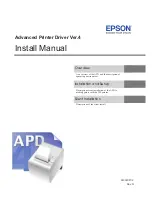
Restart Scenarios
66 9600 Series SIP IP Telephones Release 2.0 Installation and Maintenance Guide
2. The telephone detects and displays the speed of the Ethernet interface in Mbps, that is, 0,
10, or 100. The message
No Ethernet
displays until the software determines whether the
interface is 10 Mbps or 100 Mbps.
Note:
Note:
The Ethernet speed indicated is the LAN interface speed for both the telephone
and any attached PC.
3. The software determines whether sufficient IP Address information was downloaded. In this
scenario, it is discovered that sufficient information has
not
been downloaded. The
following message displays while the DHCP process is invoked:
where
s
is the number of elapsed seconds until DHCP successfully completes.
4. VLAN verification and tagging occur. The following message displays:
where
n
is the VLAN ID being used.
5. The HTTP process starts with an HTTP GET command to obtain a URI for the HTTP server,
which displays on the telephones’ Title Line. When connected, the HTTP server sends and
identifies an upgrade script.
The GET message might have to be sent several times. Each time the GET message is
sent, the URI for the current HTTP request displays.
6. When the telephone determines that the application file received is valid, the following
message displays:
where
s
is the number of elapsed seconds while non-volatile memory is erased.
7. While the application file is saved in flash memory, a progress bar shows the status:
8. The script file is processed. The software determines that the name of the boot code file in
the telephone (BOOTNAME) is the latest version, and the name of the application file in the
telephone is the same as APPNAME.
9. System-specific registration with the call server is invoked.
10. When registration finishes, a dial tone is available on the telephone.
DHCP: s secs
VLAN ID = n
File Obtained;please wait...
s secs









































